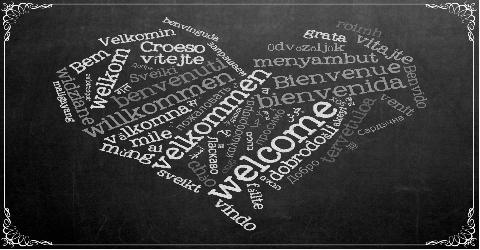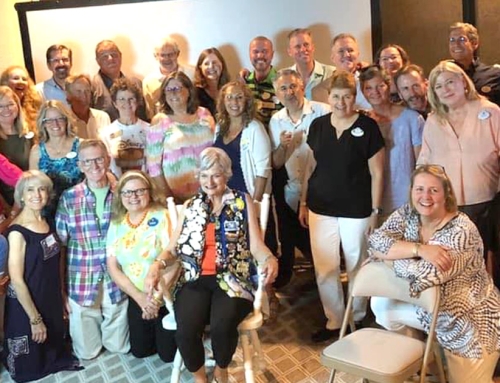 Welcome. Now, Go Away!
Welcome. Now, Go Away!
(The Subtle And Not So Subtle Signs We Send)
We all want to feel like we belong. Like we’re welcomed and not rejected. It’s a fundamental human need. Yet sometimes we receive direct or indirect signals or signs that make us feel like maybe we’re not so welcomed after all. That maybe our presence is an imposition or a distraction. This can happen in any industry, but in healthcare, it’s particularly problematic because these feelings compound the anxiety many patients already feel and can make the situation worse. There are many simple things we can do to make patients and families feel welcomed. And, the flip side of the patient experience is the employee experience where there are similar things we can do to make new new employees feel welcomed, too.
But first, a story about a not-so-subtle sign.
Go Away!
There’s a house in my neighborhood with a sign permanently affixed to the front door that reads: NO SOLICITATION! It’s written in bold block letters and it’s easy visible from the sidewalk. Honestly, if that was all the sign said it would be fine, but in smaller print just beneath those words are the following:
This includes pest control and lawn care services, religious organizations, petitions, school fundraisers, and scouts of any kind!
Wow. The exclamation points really drive home the message, right? Believe me when I tell you everyone in the neighborhood knows to stay clear of this house (even the kids know enough to skip this house on Halloween!)
I suppose the owners deserve some credit for setting their expectations up front. In no uncertain terms, and for whatever reason, they’ve told anyone and everyone to stay away — you’re not welcome here.
That sign is clear and unmistakeable. Unfortunately, a blatant sign like this isn’t the only way we tell others they’re not welcome.
We Want To Belong
As humans, the need to belong or feel welcomed is deeply rooted in our being.
A study from Berkeley says the need to belong is so strong that “any threat of rejection conjures reactions similar to what we would experience with physical pain.” Patients can feel frustrated, rejected, and unwelcome if we make them wait and don’t tell them why or let them know how long they’ll be waiting. Also, if they’re left to navigate the halls of the hospital or care facility on their own. Studies show this kind of anxiety may affect a person’s health including elevating blood pressure levels.
For patients, waiting can be incredibly frustrating. Most people know emergency situations are triaged — or prioritized — in order of severity and need, but barring an emergency, why do we keep patients waiting? Of course there are any number of reasons, some are unavoidable. So if reducing the wait time is out of our power, we have to find ways to let patients know we see them and they are welcomed.
Some hospitals or care centers use whiteboard or electronic boards to communicate wait times. These are good, but whenever possible, the human touch is even better. Upon check-in and at intervals throughout the day, front office staff or check-in teams could take a quick moment to update those in the waiting areas to let them know of any delays. Jake likes to say, in the absence of good and clear communication, chaos fills the void. Why let chaos ensue when this is something we can control? Clear communication can mean a world of difference for patients and families.
Speaking of excellent communication, Intermountain Healthcare in Utah does something extraordinary to create a defining welcoming moment with their newly-diagnosed cancer patients.
Rather than put the burden on the patient to travel from one office or location in the hospital, they assemble the patient’s care team and have them meet with the patient, in the patient’s room or in another central place. The goal, of course, is to welcome the patient, communicate clearly, and give the patients peace of mind so they can meet their care team on day one and feel assured that they’re in good hands. That’s an extraordinary example of a warm welcome.
Make Employees Feel Welcomed, Too
Employees can feel rejected and unwelcome if they arrive for their first day of work and and no one is there to greet them at orientation or at their work area. That’s a subtle message that implies the employee is supposed to figure it out for themselves.
Not very welcoming.
If we want employees to treat patients with kindness, courtesy, and respect, we must do the same for employees. And one way to do that is to start off on day one by creating a warm welcome.
New employees are looking for a sense of belonging just like patients. They have questions about the organization and the day-to-day operations. A warm welcome can help ease the transition from job applicant to new employee. One easy tool that requires a little advanced planning is to put a board outside of the New Employee Orientation room with the photographs and names of all the new employees attending that workshop. And in big bold letters, the sign would read: WELCOME! The employee will still have many questions during this period of adjustment to a new routine, but the warm welcome they receive at New Employee Orientation will set them up for success on day one.
*****
A warning about mixed messages. A great orientation will fall flat for an employee if it doesn’t continue when they get to their work location. Same with patients. The warm welcome they receive at the front desk check-in will fall flat if the person they speak with in patient billing is rude. In both instances, the experience started off great…but then it dropped off big time. No doubt this created unnecessary anxiety and stress for both the patient and the employee.
By the way, I passed that house in my neighborhood the other day, I couldn’t help but notice there was a “Welcome Mat” at the front door. And that horrible sign was still there, too. Talk about mixed messages!






Leave A Comment